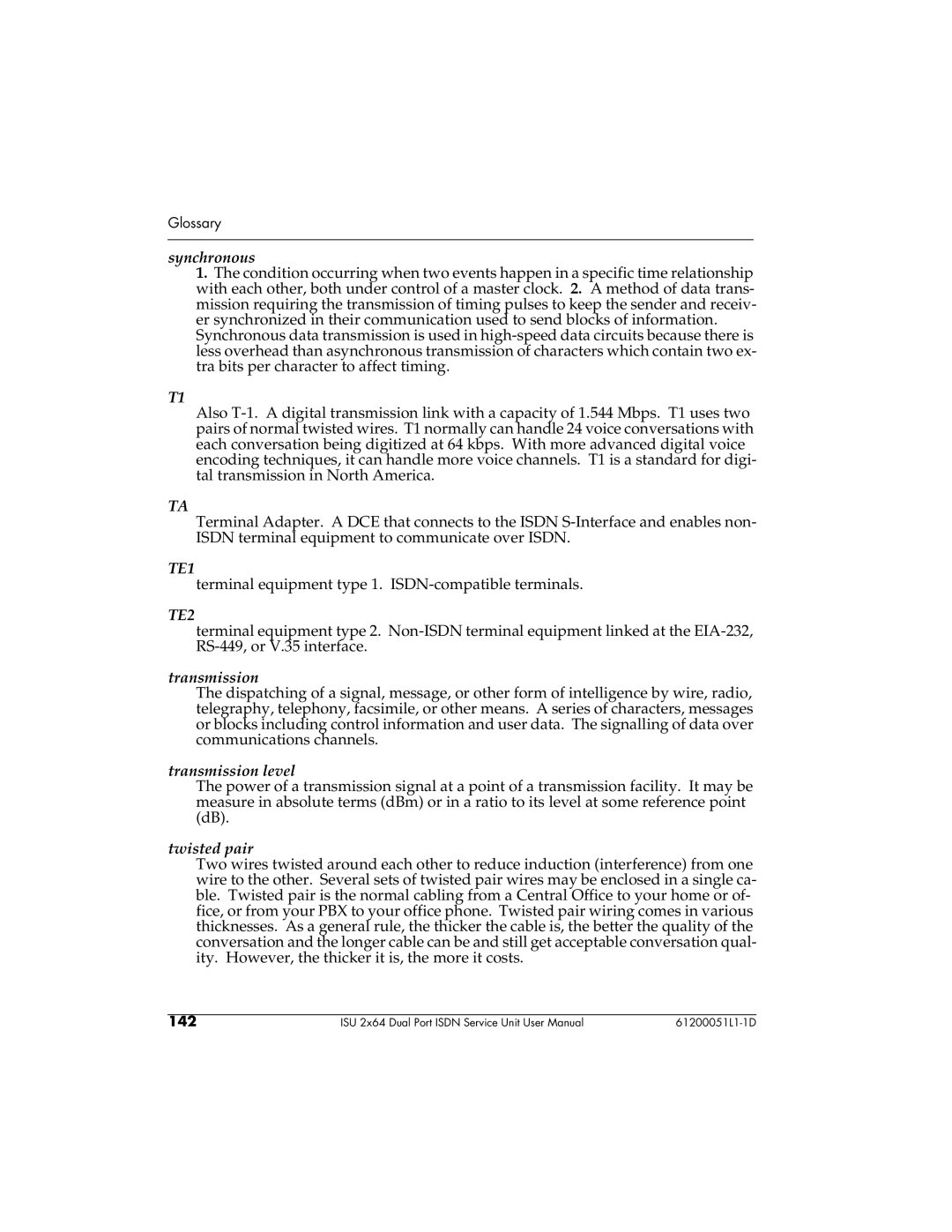Glossary
synchronous
1.The condition occurring when two events happen in a specific time relationship with each other, both under control of a master clock. 2. A method of data trans- mission requiring the transmission of timing pulses to keep the sender and receiv- er synchronized in their communication used to send blocks of information.
Synchronous data transmission is used in
T1
Also
TA
Terminal Adapter. A DCE that connects to the ISDN
TE1
terminal equipment type 1.
TE2
terminal equipment type 2.
transmission
The dispatching of a signal, message, or other form of intelligence by wire, radio, telegraphy, telephony, facsimile, or other means. A series of characters, messages or blocks including control information and user data. The signalling of data over communications channels.
transmission level
The power of a transmission signal at a point of a transmission facility. It may be measure in absolute terms (dBm) or in a ratio to its level at some reference point (dB).
twisted pair
Two wires twisted around each other to reduce induction (interference) from one wire to the other. Several sets of twisted pair wires may be enclosed in a single ca- ble. Twisted pair is the normal cabling from a Central Office to your home or of- fice, or from your PBX to your office phone. Twisted pair wiring comes in various thicknesses. As a general rule, the thicker the cable is, the better the quality of the conversation and the longer cable can be and still get acceptable conversation qual- ity. However, the thicker it is, the more it costs.
142 | ISU 2x64 Dual Port ISDN Service Unit User Manual |
